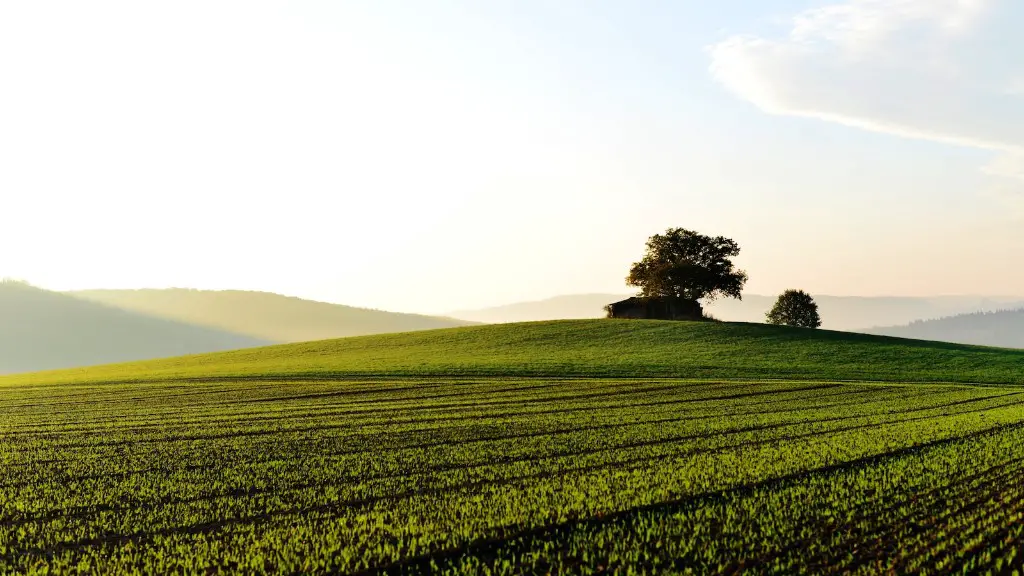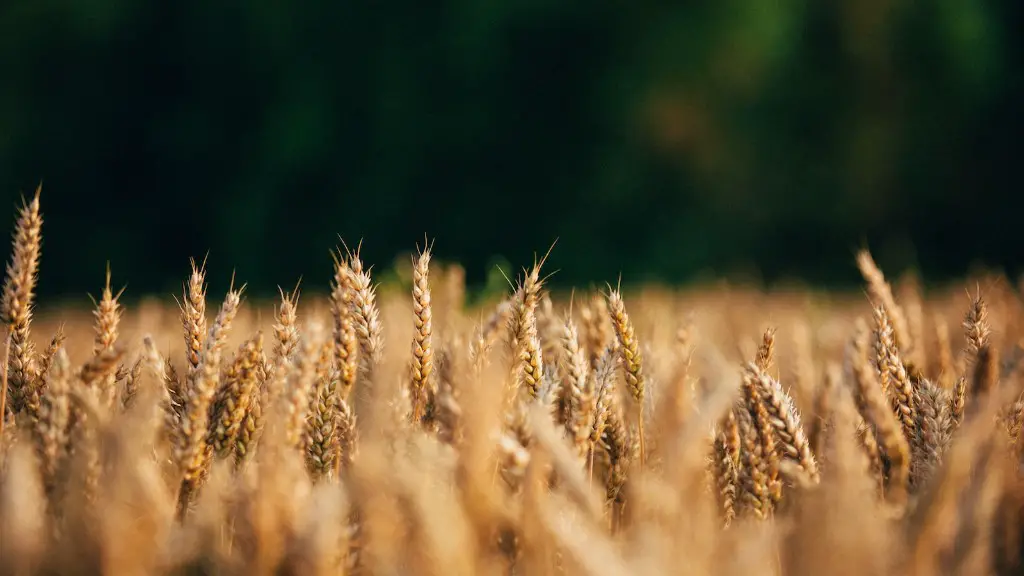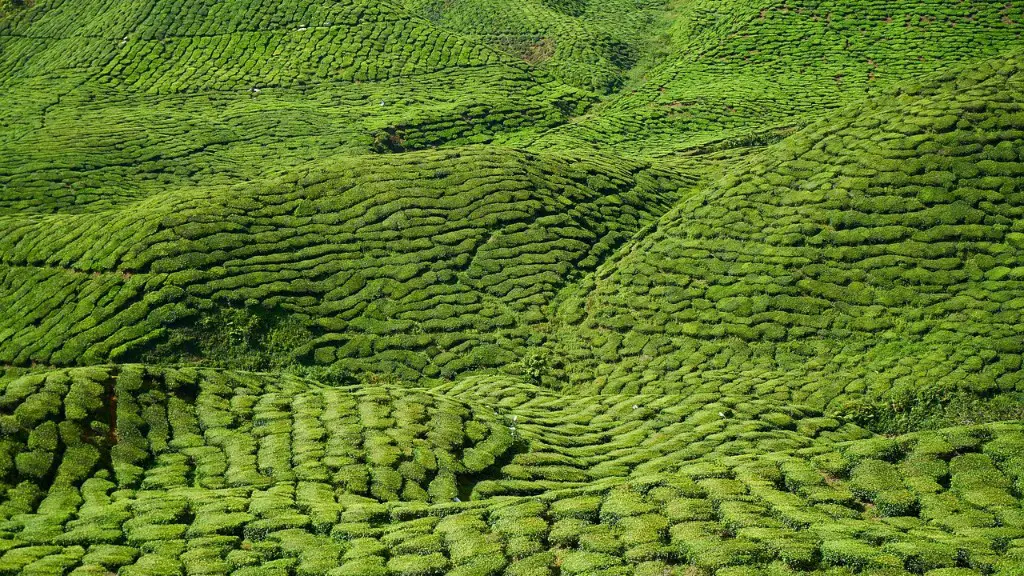Climate change has the potential to adversely affect agricultural production in a number of ways, including through changes in average temperature, rainfall, and the incidence of extreme weather events. There is evidence that all of these factors are already beginning to impact agriculture around the world, with yields of some crops declining and the area suitable for cultivation shrinking. If these trends continue, the effect on global food security could be profound.
Climate change can affect agriculture in a number of ways. For example, it can impact the quality and quantity of crops, lead to increases in pests and diseases, and disturb the timing of the growing season. Additionally, extreme weather events such as droughts and floods can damage crops and lead to losses in production. All of these factors can have a significant impact on the livelihoods of farmers and the food security of a region.
How has climate change affected agriculture?
Climate change is already affecting agricultural production in a number of ways. Changes in ozone, greenhouse gases and climate change can all lead to changes in temperature, which in turn can cause habitat ranges and crop planting dates to shift. Droughts and floods due to climate change may also hinder farming practices. As a result, agricultural producers must be adaptable and responsive to the changing conditions in order to continue to produce food and other crops.
Climate change is already affecting agriculture and food supply in a number of ways. Soil erosion from heavy rainfalls is a major environmental threat to sustainable crop production. Drought conditions are also increasing, which can lead to wildfires and decreased crop yields. Heat stress from rising temperatures is also a concern, as it can reduce soil fertility and water availability. All of these factors underscore the importance of developing more sustainable and resilient agricultural practices that can adapt to a changing climate.
Where does climate change affect agriculture the most
Climate change is already impacting farmers across the United States in a variety of ways. Flooding is becoming more common in many agricultural regions due to more extreme weather patterns. This can damage crops, delay planting, and lead to other costly problems. Sea level rise is also increasing the risk of flooding on coastal farms. As the climate continues to change, it is likely that these and other impacts will become more common and more severe. Farmers will need to adapt their practices to cope with these new challenges.
The Earth’s average temperature is rising, and this is largely due to greenhouse gases trapping more heat in the atmosphere. This is causing droughts to become longer and more extreme, and tropical storms to become more severe. The effects of climate change are becoming more and more evident, and it is clear that we need to take action to reduce our emissions of greenhouse gases.
What are 5 environmental factors that affect the agriculture industry?
The extent of arable land is influenced by environmental factors such as terrain, climate, soil properties, and soil water. Crops need space to grow, sufficient light, warmth, and moisture. Soils must be of sufficient depth with sufficient drainage, texture, and chemical and fertility properties.
Large-scale, conventional farming is not sustainable in the long term. It contributes to climate change, pollutes air and water, and depletes soil fertility. We need to find ways to produce food that are more environmentally friendly and sustainable.
How is climate change affecting farms and our food?
Climate change is already having an impact on food crops around the world. As temperatures rise and weather patterns become more extreme, crops are becoming increasingly vulnerable to pests, diseases, and drought. In some cases, yields are declining as a result.
Climate change will likely have a significant impact on food security in the coming years. As crop yields decline and prices increase, access to affordable, nutritious food will become increasingly difficult for many people. This is particularly true in regions that are already struggling with high levels of food insecurity.
To adapt to the changing climate, farmers will need to adopt new practices and technologies. This includes things like using more drought-resistant seeds, investing in irrigation systems, andmonitoring crops more closely for pest and disease outbreaks.
By taking action now, we can help mitigate the impacts of climate change on food crops and ensure that everyone has access to the nutritious food they need to lead healthy lives.
It is clear that the way we currently produce food is not sustainable in the long term. The amount of greenhouse gas emissions produced by clearing land for farming and the farming itself is simply too high. We need to find a way to produce food that doesn’t have such a high environmental impact.
What are the 7 effects of climate change
Climate change is already having a major impact on our planet and its inhabitants. Various symptoms of this global problem are all around us, from extreme weather events to dwindling sea ice and record-breaking temperatures. These consequences often create hardship for humans, as well as stressing ecosystems to the breaking point. In order to combat climate change, it is essential that we all work together to reduce our carbon footprints and promote sustainability.
Climate change will have a profound impact on agriculture. As average temperatures rise and weather patterns become more extreme, crops will be exposed to new risks, pests, and diseases. Soil erosion from floods and droughts will become more common, and the nutritional quality of some plants will decline. As atmospheric carbon dioxide levels increase, plants may become less efficient at photosynthesis, further reducing crop yields. These impacts will have a direct effect on food security, as well as the economic and social stability of communities that rely on agriculture.
How does climate change affect agriculture and water?
Higher temperatures will lead to increased demand for water by crops and natural vegetation for evapotranspiration, leading to more rapid depletion of soil moisture. This, combined with changes in rainfall patterns, may lead to more frequent crop failures.
Producing food takes a toll on the environment in a number of ways. Perhaps the most significant is the sheer amount of water required. It takes 2,400 gallons of water to produce just one pound of beef, for example. And as global demand for meat and dairy products continues to rise, so does the amount of water needed to sustain our food system.
Not only does farming use large quantities of water, it also pollutes water sources with agricultural chemicals like pesticides and fertilizers. These pollutants can end up in our drinking water, contaminate rivers and streams, and even cause major marine dead zones.
But water pollution is just one of the many ways that food production harms the environment. The agriculture sector is also a major contributor to greenhouse gas emissions, responsible for around 24 percent of total global emissions. And as demand for animal products continues to grow, so too does the industry’s carbon footprint.
Additionally, farming can lead to the depletion of natural resources like soil andforestland. And food production creates a lot of waste, from packaging to uneaten food scraps. In the U.S., for example, we waste up to 40 percent of the food we produce.
Fortunately, there are some steps we can take to
What are the current environmental issues in agriculture
Agriculture is one of the leading causes of environmental degradation. It contributes to climate change, deforestation, biodiversity loss, dead zones, genetic engineering, irrigation problems, pollutants, soil degradation, and waste. These problems are having a devastating effect on our planet and its ability to support life. We must take action to protect our environment and preserve our planet for future generations.
There is no doubt that agriculture is the leading source of pollution in many countries. Pesticides, fertilizers and other toxic farm chemicals can poison fresh water, marine ecosystems, air and soil. They also can remain in the environment for generations. This is a major problem that needs to be addressed.
What are 3 problems of agriculture?
It is essential that we set the table to address the triple challenge of feeding a growing population, providing a livelihood for farmers, and protecting the environment. We must work together to find solutions that will allow us to make sustainable progress in all three areas.
Heavy rain, hail storms and flooding can physically damage crops and delay planting or harvesting, which can lead to reduced crop yields. Even if mean values for precipitation are not projected to change, there are likely to be more significant extreme weather events that will reduce crop yields.
What are 5 major consequences of climate change
As the climate continues to change, the impacts on animals and their habitats are becoming more and more evident. Many species are struggling to adapt to new and increasingly extreme conditions, and many are already disappearing as a result.
Those that are able to adapt may only be doing so by migrating to new areas, which in turn can cause problems for other species that are already there. As more and more animals are forced to compete for fewer resources, the potential for conflict, disease and suffering only increases.
Climate change is therefore not only a threat to the future of all life on Earth, but it is also a major welfare issue for animals right now. We must do everything we can to reduce our impact on the environment and help animals to cope with the changes that are already taking place.
The impacts of climate change on different sectors of society are indeed interrelated. Drought can harm food production and human health, for example, while flooding can lead to disease spread and damages to ecosystems and infrastructure. Human health issues can also increase mortality, impact food availability, and limit worker productivity. All of these impacts can have serious implications for society as a whole.
Warp Up
The effects of climate change on agriculture are complex and depend on a number of factors, including the type of crop, the region where it is grown, and the weather conditions. In general, climate change is expected to reduce the productivity of crops, leading to higher food prices and less food security. Climate change may also increase the spread of crop diseases and pests, and cause more extreme weather conditions that can damage crops.
In conclusion, climate change can affect agriculture in many ways. For example, it can change the timing and amount of rainfall, increase temperatures, and reduce soil moisture. All of these factors can lead to decreased crop yields and increased costs for farmers.





